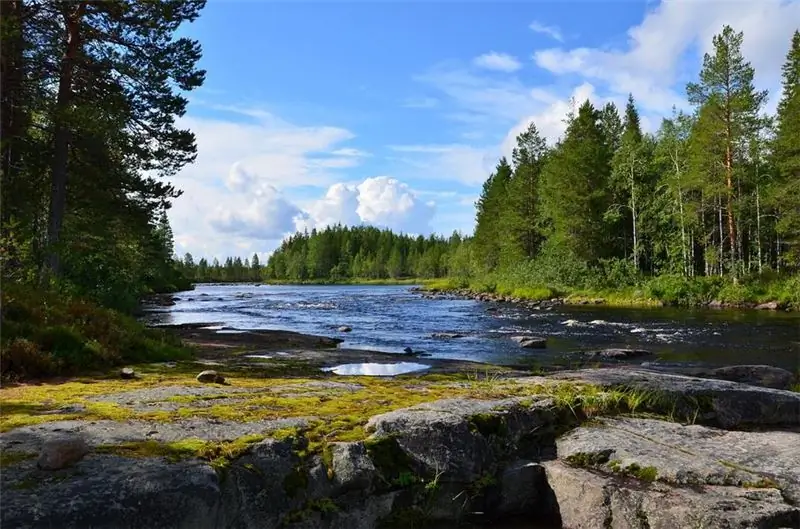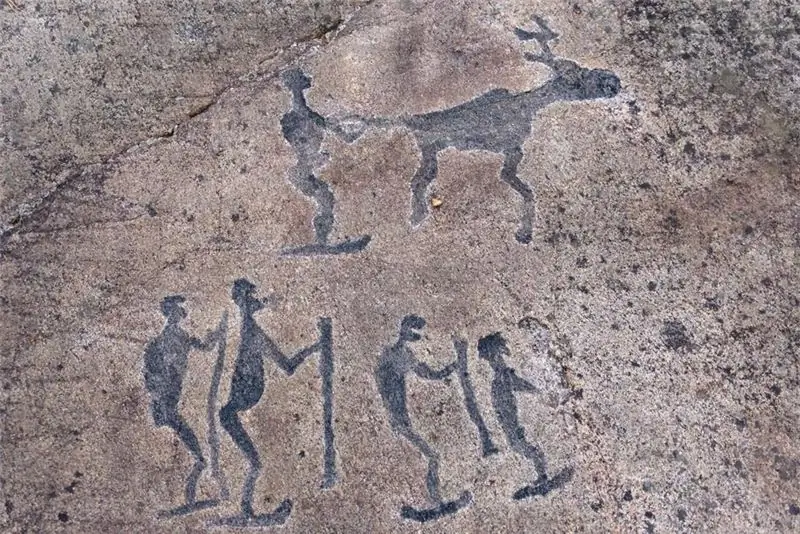
New sites on the UNESCO World Heritage List are a signal for avid tourists: it's time to plan a new trip to distant, and in some cases, not so shores. Much that you might have missed on previous trips is now recognized as masterpieces of architecture, unique natural monuments, and historical heritage. And this is definitely worth seeing!
Our story is dedicated to new sites, now under the jurisdiction of UNESCO.
Petroglyphs in Karelia, Russia

Photo by: Semenov.m7
The closest and most accessible at the moment a new UNESCO site is located in our country, in the amazing and picturesque Karelia. It is a civilized area where trains, buses and planes fly.
The international community is interested in a local treasure - petroglyphs, left on the stones, presumably by the Finno-Ugric tribes before the pyramids appeared in Egypt. 4500 rock paintings, which are located in different parts of Karelia, fell under the protection of UNESCO. Some of the petroglyphs are concentrated in the Belomorsk region, the rest are called Onega and are located on the shores of Lake Onega. These two groups of prehistoric drawings are separated by a space of 300 km.
All petroglyphs are arranged in groups. On Lake Onega, they can be found on the rocks of Besov Nos and several capes. The main image of the petroglyphs of the Besov Nose is the same Bes from the name of the area - a man with a rectangular head and a terrible crack near his mouth, where, according to some researchers, representatives of ancient tribes poured blood. Also among the Onega petroglyphs there are animals, birds, strange mythological creatures, tools. Images can be tiny or as large as 3m.
Near Belomorsk you can see images of people, boats, genre scenes. Near the petroglyphs, there are sites of people of the Stone Age.
Urban porticoes in Bologna, Italy
Covered galleries, formed by graceful columns on one side and building facades on the other, are the pride of Bologna. If you put the Bologna portico in one row, then its length will be 62 km.
Not all the porticoes of Bologna were under the auspices of UNESCO, but only the most beautiful and ancient ones. All of them are located in the city center and are divided into 12 groups. In addition to the porticoes, the buildings closest to them were also included in the UNESCO List.
Porticos in Bologna became fashionable and in demand in the 12th century. They were built in the following centuries. These galleries made the facades of the palaces more graceful and allowed the townspeople to move freely around the city even in the rain.
The porticos were built from different materials. Even wooden galleries have survived to this day, which seem especially fragile and short-lived.
Objects by architect Jože Plečnik in Ljubljana, Slovenia

Jože Plečnik was the man whose task it was to transform the out-of-the-ordinary town of the Austro-Hungarian Empire, Ljubljana, into a splendid, livable and admirable capital of Slovenia. He lived and worked in the years between the two world wars.
Everything that Plečnik designed and built is now the striking sights of Ljubljana. The UNESCO organization turned its attention to a whole complex of urban buildings - the embankment, several bridges, squares, the building of the national library and even the local necropolis. All these objects successfully and harmoniously fit into the existing urban design.
Shale landscapes in Wales, UK
Photo Credit: Jeff Buck
In search of the next new object on the UNESCO World Heritage List, you need to go to the Snowdon Massif, which has long been famous for its rich deposits of oil shale, which is necessary for the construction of roofs of buildings. It was there that quarries and mines were built for its extraction, which brought many changes to the existing idyllic rural landscape.
Intensive mining of oil shale in the Wales mountains took place during what was later called the Industrial Revolution. It began in 1780 and lasted until 1914. However, as evidenced by numerous written sources, local residents paid attention to shale deposits as early as 1800 years ago.
When visiting the site called "Shale Landscapes of Wales" must-see:
- the Electric Mountain Power Plant, based in a man-made cave in Mount Elidir Vaur and powered by water from two linked lakes, Markhlin Maur and Hlin Peris;
- the huge area of shale mining in Glan-Ronwy, where ammunition was stored since the beginning of the Second World War, and then they did not change this habit;
- the narrow-gauge Talyllyn Railway, which was previously used as a transport artery, and now takes tourists to Mount Snowdon at a height of 1,085 meters;
- the Manaud quarry, where during the Second World War, the treasures of the National Gallery were hidden from the Nazis.
Ivindo National Park, Gabon
Photo by: Ngangorica
Ivindo is the second nature reserve in Gabon to be included in the UNESCO World Heritage List (the first was Lope). In total, this African country has 13 national parks.
The area of the Ivindo nature reserve is 3000 sq. km. All this space is overgrown with an equatorial African forest, which in some places is cut by thin river veins with beautiful waterfalls.
The river fauna of Ivindo Park is still waiting to be explored. They say that hitherto unknown species of fish can live here, which will make a splash in the scientific world.
The local jungle is inhabited by forest elephants, a huge number of birds, among which the Jaco parrots, leopards, and various types of monkeys are worth noting. There are also corners in the park where no human has ever set foot.






